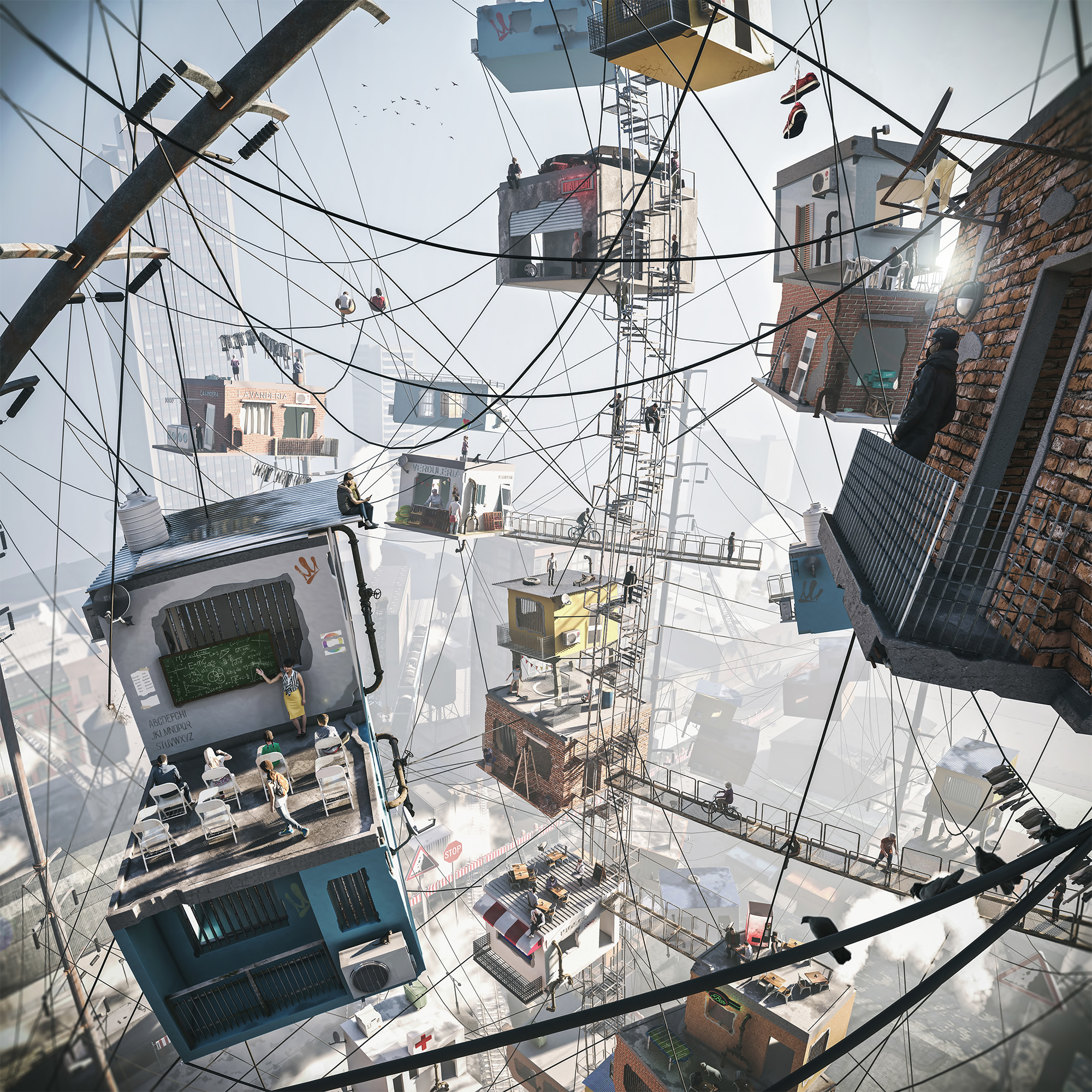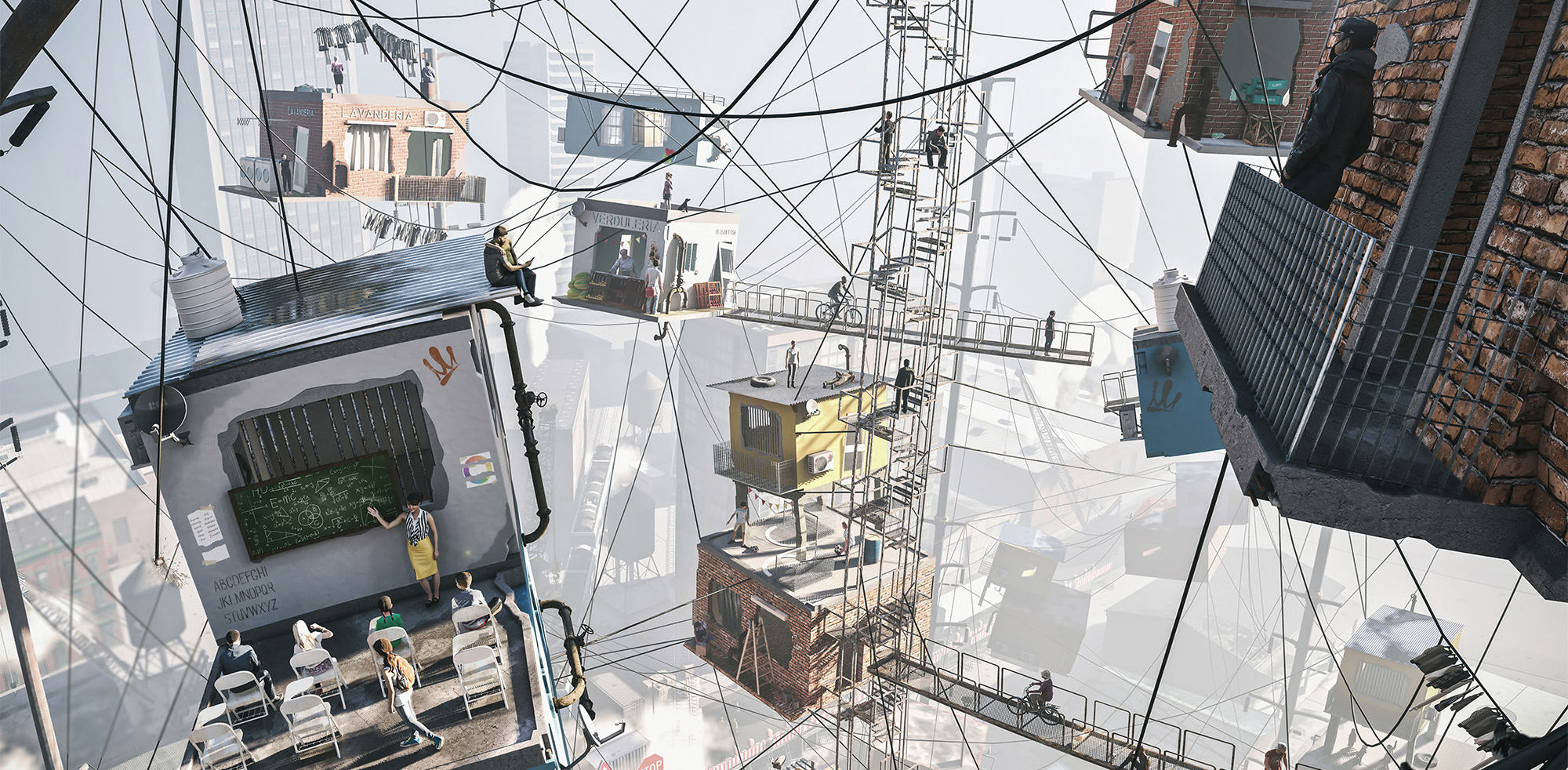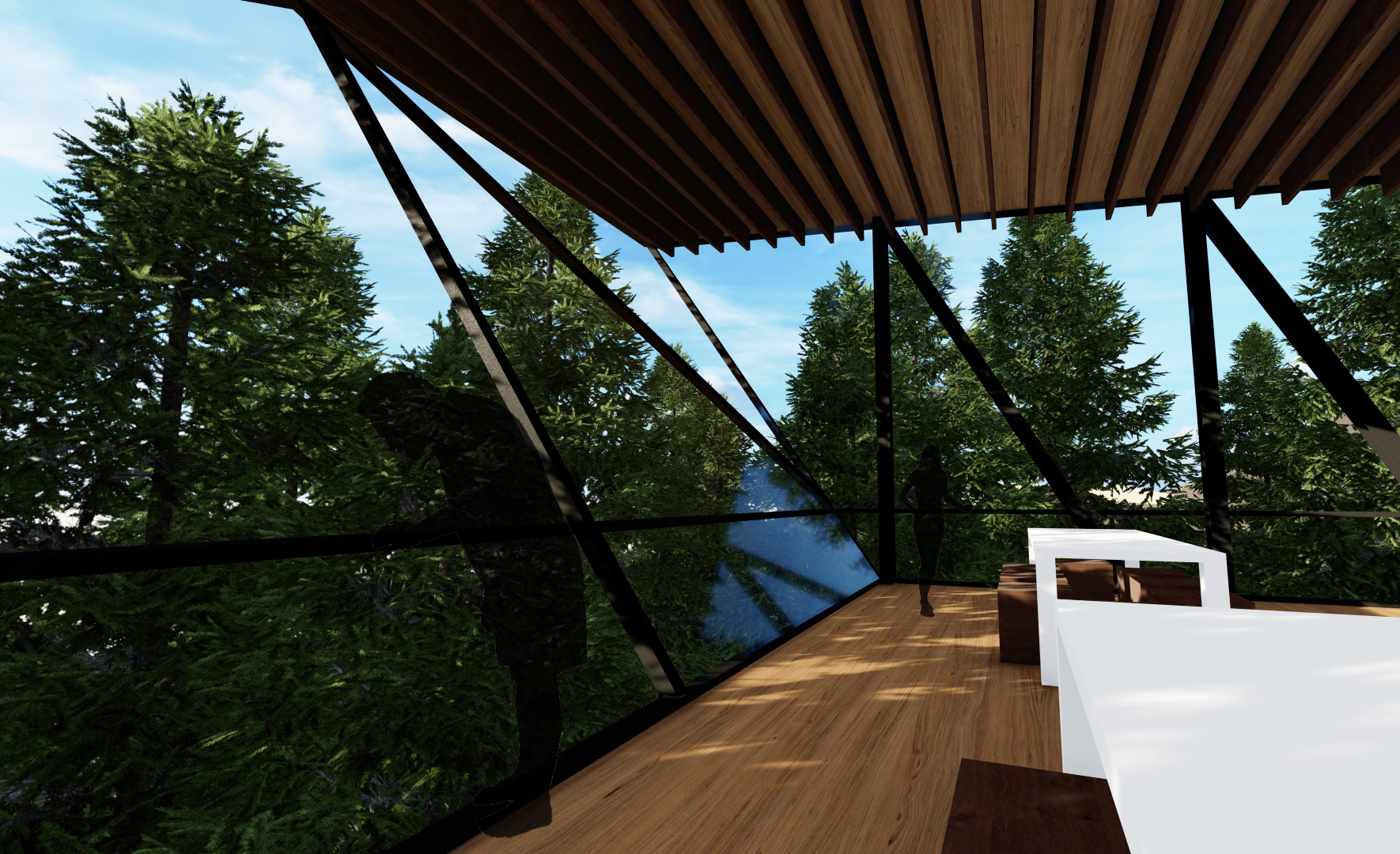We are thrilled to announce the winners of Architizer's inaugural Vision Awards, the world’s biggest awards program dedicated to the art of architectural representation. Sign up to receive future program updates >
“Unrestrained density attempts to bear its own weight, beating gravity itself;” says Camila Crudo, Jeremias Dabbah and Sofia Di Tomaso, “however, it seems to expand endlessly. Those tired cables will not withstand the burden of time.” This view of the city as an intricate and delicate system — wherein if one aspect strains, the ripple effects are felt elsewhere — was the starting point for “Hanging by a Thread,” the visualization that took home the student prize for Architizer’s 2nd Annual One Rendering Challenge.
In their rendering, the trio of students from Universidad de Buenos Aires depict the tangled web of sticky situations that the population of Villa 3 — an infamous slum in the Argentine capital — experience in their day-to-day. Extreme crowding and dereliction force families to spend their days merely adapting and surviving. More than a creative reflection upon an existing social crisis, the rendering seeks to interpret and understand inhabitants’ stories and engage the viewer in deep contemplation about the everyday precarity exacerbated by urban squalor.

Camila Crudo, Jeremias Dabbah and Sofia Di Tomaso’s winning rendering, “Hanging by a Thread”; Image courtesy of authors.
The winning rendering gives captivating visual expression to a marginalized and often invisible social issue, dual factors that contributed to its authors winning one of two Grand Prizes of $2,500. “It works well to not only creatively reimagine life in a specific location, but also allows that microcosm to relate to modern society as a whole,” said juror Mengyi Fan, Director of Visualization at SHoP Architects; “The composition of the image, from the perspective used to the slight fish-eye of the lens, emphasizes the disarray of the image, the society, and its inhabitants. It is an image that reveals more the longer you look, and I sincerely applaud the beautiful work and the thought put into it.”
Architizer spoke with Camila, Jeremias and Sofia about their winning rendering, the creative process behind it, and what other One Rendering Challengers can learn for their next submission.

Detail from the rendering process, image courtesy of Camila Crudo, Jeremias Dabbah and Sofia Di Tomaso.
Congratulations on your success! What does winning the 2021 One Rendering Challenge mean to you?
We are grateful for this recognition because it represents that the effort we put into the image achieved the impact we wanted to convey. Also, we are overjoyed that through the contest, the image has a wider reach.
What were the primary challenges of conceiving your work, from forming the idea to the actual physical process of rendering?
The biggest challenge was capturing our different visions of the same concept generating an impact and a narrative. Our main idea was to create an explicit image at first sight, but then, when you look at it in detail, you can contemplate, in the different parts of the image, multiple stories of the same reality. Our visualization is based on research that allowed us to study the different elements to generate a good composition, where each detail is carefully placed for a reason.

Detail of the design process, image courtesy of Camila Crudo, Jeremias Dabbah and Sofia Di Tomaso.
Did you use your usual techniques and software for creating this rendering? If you tried something different, how did that go?
As a team, we were able to complement each other, taking into account the skills that each one of us had with each program. In this way, we were learning from each other and improving our skills.
What connection does this image have to you and your personal feelings about architecture?
We believe that architecture has the power to convey a message; it is not simply a construction or an object to be observed. It should generate a connection with people. And it is our duty as future architects to understand the communication capacity of an image and the impact it can achieve.


Detail of the design process, image courtesy of Camila Crudo, Jeremias Dabbah and Sofia Di Tomaso.
Do you have any other work that compares to this in terms of lighting, atmosphere and composition?
During the creative process of the image, we generated others based on the same idea, but finally, this was the one that really conveyed everything we wanted to communicate so that it expressed our concerns and thoughts.
What one tip would you give students and architects looking to win next year’s One Rendering Challenge?
It is not simply to generate the most realistic or sophisticated rendering but to transmit a message that generates introspection and allows the observer to immerse themselves into the story. It is also important when working as a team to listen to different opinions and have an exchange to achieve a better result.
We are thrilled to announce the winners of Architizer's inaugural Vision Awards, the world’s biggest awards program dedicated to the art of architectural representation. Sign up to receive future program updates >









